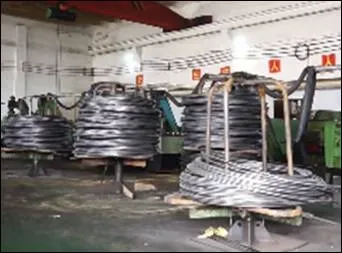Nov . 08, 2024 20:21 Back to list
anchor bolt sizes mm
Understanding Anchor Bolt Sizes in Millimeters
Anchor bolts are essential components in construction and engineering, designed to secure structural elements to concrete foundations. Whether used to anchor machinery, support structural frameworks, or hold down equipment, the selection of appropriate anchor bolt sizes is crucial for ensuring safety, stability, and reliability of the construction. Among various dimensions and specifications, measuring anchor bolts in millimeters has become a common standard in many countries. This article delves into the importance, types, and sizing of anchor bolts in millimeters, along with guidelines for selecting the right size.
Importance of Anchor Bolt Sizing
The primary function of an anchor bolt is to provide a reliable connection between a structure and its foundation. The size of the anchor bolt directly affects its tensile and shear strength, which are crucial for resisting various loads, including weight, wind, and seismic activity. Proper sizing ensures that the anchor bolt can withstand these stresses without failure, making the knowledge of various sizes and their applications indispensable for engineers and constructors.
Types of Anchor Bolts
Anchor bolts come in a variety of shapes and sizes, catering to different applications. The most common types include
1. L-shaped Anchor Bolts These are bent at a right angle and are typically used for securing structural steel to concrete. The horizontal leg of the L shape is embedded into the concrete, while the vertical leg extends above the surface for attaching structural elements.
2. Straight Anchor Bolts These are straight rods that are used in many applications, often characterized by a threaded end for attaching additional fixtures. They are common in bolting equipment and machinery to the ground.
3. Hooked Anchor Bolts Featuring a hook at one end, these bolts are especially useful in applications where pullout resistance is crucial. The hook is embedded in concrete, creating a strong hold.
4. Expansion Bolts Used in applications requiring a snug fit, expansion bolts expand upon installation to grip the walls of the hole drilled into the concrete.
Measuring Anchor Bolt Sizes in Millimeters
When measuring anchor bolts, several dimensions need to be considered
anchor bolt sizes mm

- Diameter This is the width of the bolt and is typically specified in millimeters. Common sizes include M10 (10 mm), M12 (12 mm), M16 (16 mm), and larger diameters for heavier loads.
- Length The overall length of the bolt is crucial for ensuring that it can be embedded adequately into the concrete while providing enough thread for securing fixtures on top.
- Thread Pitch This refers to the distance between the threads on a bolt and is also measured in millimeters. Coarse threads (like M12 x 1.75) are often used for general applications, while fine threads (such as M12 x 1.5) are advisable for high-strength applications.
Selecting the correct diameter and length based on the specific structural requirements, environmental conditions, and load specifications is essential for the safety and performance of anchor bolts.
Guidelines for Choosing the Right Anchor Bolt Size
1. Load Requirements Assess the loads that the anchor bolt will be subjected to, including static and dynamic loads, to determine the necessary size.
2. Material Compatibility Consider the materials of the structure and the environment. For example, stainless steel bolts are preferable in corrosive environments, while galvanized bolts may be suitable for general use.
3. Local Codes and Regulations Always consult local building codes and regulations that govern anchor bolt specifications. Compliance ensures both safety and legality in construction practices.
4. Installation The method of installation can also dictate the required size. For instance, if using expansion bolts, the diameter of the drill hole and the anchoring system's requirements must be factored in.
5. Consult Experts When in doubt, engaging with structural engineers or construction professionals is wise to determine the most appropriate specifications for your project.
Conclusion
Understanding anchor bolt sizes, particularly in millimeters, is vital for construction and engineering professionals. The choice of the right size, type, and material plays a significant role in the overall integrity and safety of a structure. By taking into account load requirements, environmental conditions, and adherence to local regulations, one can effectively select the right anchor bolt size for any construction project. Proper attention to anchor bolt selection ultimately contributes to the durability and longevity of the construction, ensuring safety for years to come.


